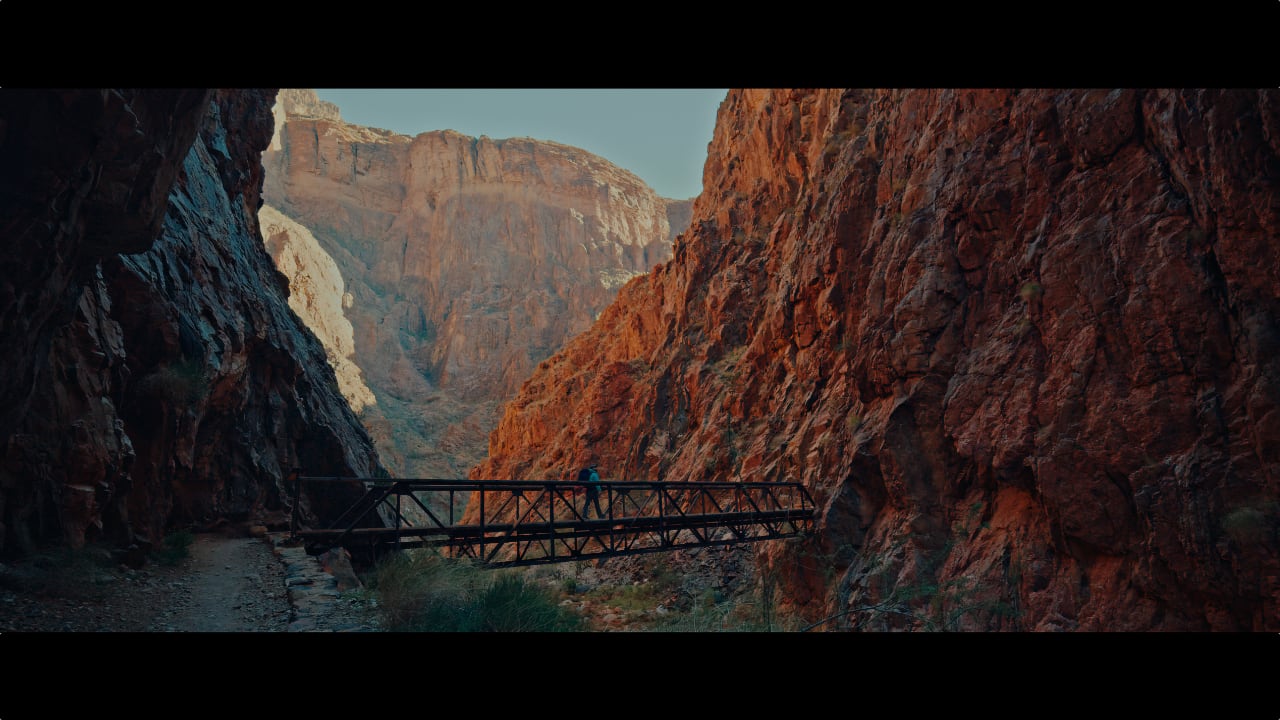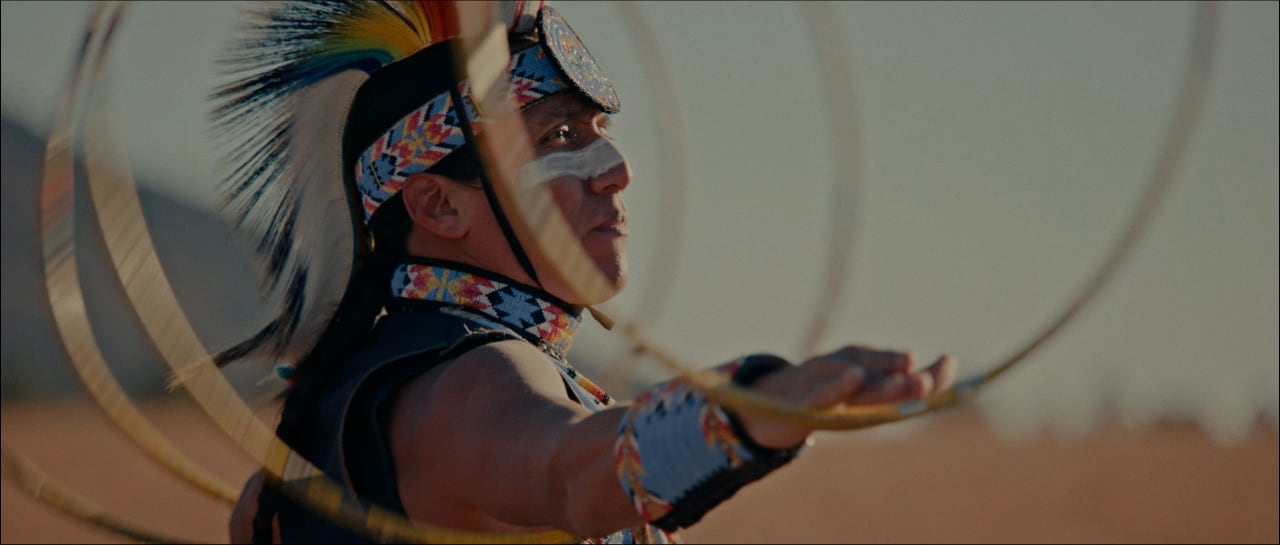
Why the documentary film MAJI was shot in the Grand Canyon on the Blackmagic Pocket Cinema Camera 6K Pro.
Nice BTS story in from Blackmagic regarding a new documentary film that premieres at the Kendall Mountain Festival this weekend. Pretty much running this as is, including the important stuff about sustainable water resources.
Against the backdrop of five athletic endurance challenges, Charli Doherty and the team at Biscuit Bunker have created a beautiful documentary film, MAJI, and an essential part of its 60-minute runtime was filmed using the Blackmagic Pocket Cinema Camera 6K Pro.
In 2020, campaigner Leo Gripari started a series of challenges to highlight the disparity in the availability of clean water worldwide. Notably, he wanted to fund sustainable water projects for the communities surrounding Bwindi Impenetrable Forest - home to the endangered mountain gorillas in Uganda.
When Director Charli Doherty spoke to Leo about the ambitious project, he decided to join him and travel to Jordan, Nepal, the USA, Uganda, and Iceland to document the five challenges and how the sustainable water crisis is affecting these different areas of the planet.
"As I began to research and educate myself on the broader issue of global water instability, I was struck by the scale and complexity of the problem," says Charli. "It significantly affects many countries worldwide, from melting glaciers to pollution and desertification. This realization led to the development of what would become the documentary film MAJI - which is the Swahili for water."
Leo's fundraising and the parallel documentary film project were both born during the initial stages of the international Covid-19 lockdown, which presented challenges for both.
Biscuit Bunker Producer Tom Neish remembers the uncertainty of those first weeks. "For USA, Arizona, in particular, we had lined up all of our interview subjects and gained all the permits required to hike the Grand Canyon from rim to rim and back again, but we were painfully waiting for the USA to ease its COVID restrictions. It was in full shut out of international visitors.”
You can shoot with what you carry
Usually, on an international project, air travel is one of the critical considerations when choosing what gear to take. However, with demanding tasks, such as a 50km hike along the Grand Canyon, size and weight are even more of an issue.
"The fundamental challenges of the Grand Canyon were weight and battery life - there is nowhere to charge!" says Director of Photography Richard Jephcote. "Treks through the canyon are built around how much a team can carry; you're expected to carry everything you'll need to survive.
"Production kit was in addition to all of that, and while trekking equipment is purpose-built to be light, DZO cine lenses and V-lock batteries are not. We also needed the camera built and ready to go to hit all our milestones along the trek."
The size and weight were some of the reasons that Richard chose to shoot this element of the production using Blackmagic’s Pocket Cinema Camera 6K Pro (BMPCC6K Pro).
"The 6K sensor produces a lovely image, thanks to the 12-bit color depth and the color science that goes with that," explains Richard. Likewise, the camera’s flexibility was not only in its physical dimensions but also in how a DOP can change the Blackmagic RAW compression ratios depending on the subject. Making the most of every last megabyte available was critical when the production team spent many days traveling in remote locations.
"Being able to drop down to high compression like 12:1 for long interviews, or to squeeze the last juice out of a card at the end of a day and then switch back to lower compression for some beautiful B-roll, all in the same format is great for responding to run-and-gun situations."
Short on time and resources, there was no time for preparation and test shots. "Most of the time, it was a case of throwing the Cinesaddle down and unzipping the 6K, shooting and moving on. There were no retakes or covering a certain section from different angles. There wasn't the time to do that and complete the day's trek," recalls Richard.
Filming the hoop dance

But the project wasn't just the story of Leo and his challenges. The documentary also tells how the water crisis affects local communities.
"One of our locations was Arizona, USA, which is known for having ongoing problems with water instability, namely drought," says Charli. "But perhaps less known is the deep cultural significance of the many springs, rivers, and lakes drying up, and the impact this has on Native communities.”
"Despite the spiritual significance of water, many Native communities continue to face ongoing struggles with securing access to clean and sustainable water sources, which has significant health, economic, and cultural implications."
The team wanted to highlight just how vital, healthy natural water sources are to these Native communities. They spoke to community leaders such as Vincent Randall of the Yavapai-Apache Nation. "He educated us on the historical and ongoing challenges his community faces in securing their water rights," recalls Charli.
To illustrate the significance of water to the Native American community, the production team filmed a traditional hoop dance performed by Tony Duncan, a San Carlos Apache.
"The dance uses hoops to create images and shapes that represent the many beautiful creations on Mother Earth. The hoop dance teaches us that we must respect and honor all of life as we are all connected in this great circle of life," says Tony.
It is one of the standout sequences in the MAJI documentary, filmed at 50fps to allow the sequence to be replayed in slow motion to emphasize the movement in beautiful detail.
“Tony's incredible hoop dance allowed us to develop our narrative by creating a visual sequence reflective of the deep cultural connection that Native communities in the region have with nature, particularly water,” reveals Charli.
Most of MAJI, including the incredible hoop dance scene in Arizona, was shot by Richard using the DZO Pictor 20-55mm T2.8 lens. "The DZO 20-55mm has a nice focal range and feels lovely," explains Richard. "It is a heavy lens but has a lot of character and is a great match for the camera, giving a softer, less digital feel."
Using the BMPCC6K Pro and DZO lenses makes MAJI a beautiful piece of documentary filmmaking with an important narrative.
"The issue of global water instability is complex and multifaceted,” says Charli Doherty. 'It affects people and communities around the world in different ways. By showing diverse water stories and highlighting individual efforts to make a difference, the film emphasizes the shared urgency of global water issues and the importance of finding sustainable water solutions. Ultimately, we hope that MAJI will inform and inspire audiences.”
You can find out more about MAJI at biscuitbunker.com
● Charli Doherty - Director: http://charlidoherty.com
● Richard Jephcote - DoP: http://richardjephcote.co.uk
Tags: Production


Comments